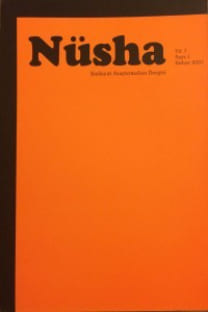EDÎB SÂBİR DÎVÂNI’NDA SULTAN SENCER METHİYELERİ
Selçuklular, Sultan Sencer, Edîb Sâbir
EULOGY FOR SULTAN SANCAR IN ADĪB SĀBER’S DĪWĀN
Seljuks, Sultan Sancar, Adīb Sāber,
___
- ‘Avfî, Muhammed, Lubâbu’l-elbâb, (1389/2010), nşr. Edward G. Browne-Muhammed-i Kazvînî, İntişârât-i Hermes, Tahran.
- Âzer-i Bîgdilî, Lutf Ali Beg, (1378/1999), Âteşkede-i Âzer, tsh. Mîr Hâşim Muhaddis, C 2, İntişârât-i Emîr-i Kebîr, Tahran.
- Cuveynî, Ata Melik, (1916), Târîh-i Cihânguşâ-yi Cuveynî, nşr. Muhammed-i Kazvînî, C 2, Leiden.
- Edîb Sâbir-i Tirmizî, (1331/1952), Dîvân-i Edîb Sâbir-i Tirmizî, tsh. Ali Kavîm, Kelâle-i Hâver, Tahran.
- Devletşâh-i Semerkandî, (1382/2003), Tezkiretu’ş-şu‘arâ, tsh. Edward Browne, Çâp-i Leiden, 1900, İntişârât-i Esâtîr.
- Furûzânfer, Bedî‘uzzamân, (1380/2001), Suhen u Suhenverân, İntişârât-i Hârezmî, Tahran.
- Handmîr, Gıyâseddîn, (1353/1974), Habîbu’s-siyer, nşr. Muhammed Debîr-i Siyâkî, C 2, İntişârât-i Hayyâm, Tahran.
- Hidâyet, Rızâ Kulîhân, (1382/2002), Mecmâ‘ul-fusehâ, tsh. Muzâhir Musaffâ, Neşr-i Emîr-i Kebîr, C 1, Tahran.
- Râzî, Emîn Ahmed, (1378/1999), Tezkire-i Heft İklîm, nşr. Seyid Muhammed Rızâ Tâhirî, C 2, İntişârât-i Surûş, Tahran.
- Safâ, Zebîhullah, (1369/1990), Târîh-i edebiyyât der Îrân, C 2, İntişârât-i Firdevs, Tahran.
- Şafak, Sâdık Rızâzâde, (1321/1942), Târîh-i edebiyyât-i Îrân, Çâphâne-i Dâniş, Tahran.
- Dâ’iretu’l-me‘ârif-i buzurg-i İslâmî, (1375/1996), Sâzmân-i Çâp u İntişârât-i Vezâret-i Ferheng u İrşâd-i İslâmî, C 7, Tahran.
- ISSN: 1303-0752
- Yayın Aralığı: 2
- Başlangıç: 2001
- Yayıncı: Oku A.Ş.
ARAP HARFLERİNİN KÖKENİ VE BU KÖKENE DAİR KUR’ÂN’DAN BAZI ÖRNEKLER
MU‘ALLİM FEYZÎ; HAYATI, ESERLERİ VE FARSÇA ÖĞRETİMİNDEKİ YERİ VE ÖNEMİ
Musa YILDIZ, Meryem Melike GÜNGENCİ
KABUL VE RED AÇISINDAN KUR'ÂN-I KERÎM'DE MECÂZ KONUSUNUN DEĞERLENDİRİLMESİ
KABUL VE RED AÇISINDAN KUR'ÂN-I KERÎM'DE MECÂZ KONUSUNUN DEĞERLENDİRİLMESİ
EDÎB SÂBİR DÎVÂNI’NDA SULTAN SENCER METHİYELERİ
SADİ-Yİ ŞİRAZÎ’NİN AŞK VE SABIR KONULU TERCİİBENDİ
MODERN STANDART ARAPÇA VE BAZI ARAP DİYALEKTLERİNDE GELECEK ZAMAN FORMLARI
ORYANTALİST OSKAR MANN’IN (1867–1917) OSMANLI SEYAHATİ MEKTUPLARINDA ZAZACANIN TASNİFİ
